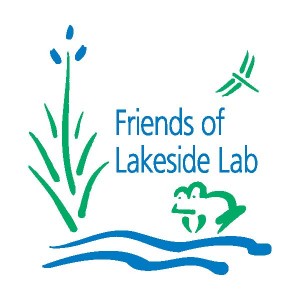Prairie textures, prairie time
by Sara Suárez
My art practice centers on film, video and photography, and in my time at Lakeside Lab I focused on making photo/video work studying the surrounding prairie landscapes and environment. And so I spent a lot of time venturing into expanses of prairie near the lab, observing, listening, taking photos, getting stung by thistles. I’m not from this region, not familiar with this land, and I felt mesmerized by the intense energy of life and the biodiversity that is so visible even to a casual observer. In any few feet I can count dozens of different native plants, wildflowers like leadplant, coneflowers, and clouds of queen-anne’s-lace; grasses brush at my ankles and my shoulders, insects whir and something rustles in the grass, invisibly.
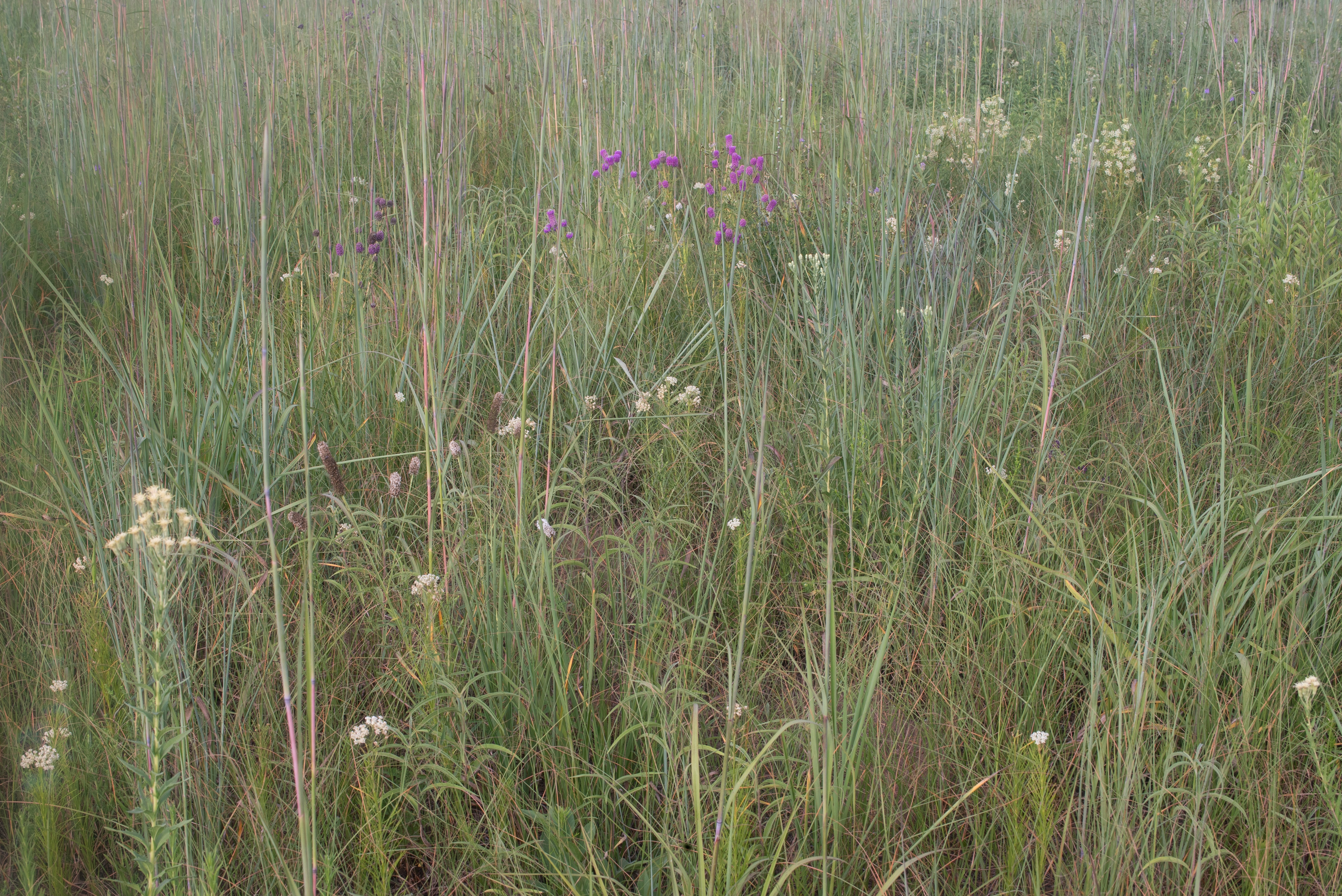
Prairie (photo by Sara Suárez)
l found myself drawn to the Cayler Prairie preserve, a nearby tallgrass prairie remnant: an area that has remained relatively undisturbed by development, and reflects an ecosystem that nearly covered Iowa before settlements and agricultural development. An estimate is that 0.1% or less of the original prairie remains; these remnant ecosystems can be thousands of years old. That word, remnant, continues to pull at me even after I’ve returned to Los Angeles. It speaks at once to a past and present existence, marking the ecosystem I’m standing in as a survivor, and invoking the other prairies that have been destroyed. Implicit in the word is a kind of pastness, and a history of loss. But as I walk through the prairie, the place is vibrantly alive around me. Standing in it is like meeting a door into another possible world.
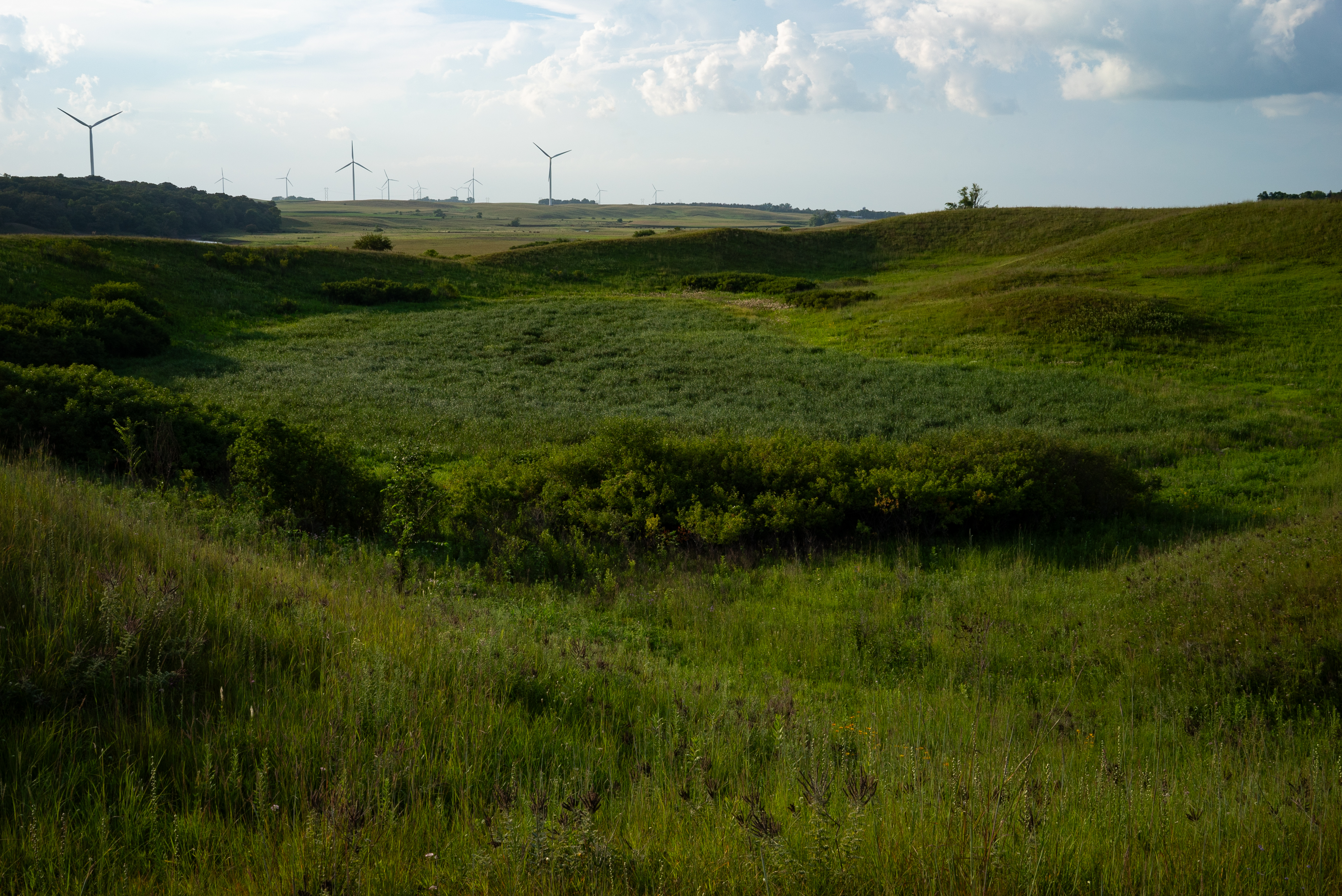
Kettle hole prairie (photo by Sara Suárez)
There’s a kettle hole nearby, a place where retreating glaciers left a sweeping indentation in the prairie, ten or twelve thousand years ago. It’s a small area of land bordered by cornfield and roads, but it feels expansive. Wind moves across slopes covered in a network of flowers. From the gravel road I follow a thin path cut through the tall grasses until I see a wide, sloping hole, its center a rich, deep green fabric of wetland grasses. Like some of the areas near Lakeside Lab, it represents a prairie restoration effort, where humans have carefully replanted land with native plants.
In the artists studio I encountered the lab’s herbarium, which offers an alternate view of these places and different forms of time and preservation. Its tall cabinets are stacked high with dried plant specimens collected from local sites, each fixed on heavy paper with names, dates and notes, and as a collection they account for over 120 years. (I encountered at least one page from 1896.) But that is nothing next to the age of a kettlehole, or a prairie.
I used the scanner in one of the labs to make botanical images with plants I collected, and assemblages reflecting the different micro-communities of plants I encountered in the prairie. It started as a curious experiment and a way to study these plants more closely, and I found it opening a visual conversation with the herbarium. (Some bones and other objects also made it onto the scanner as well.)
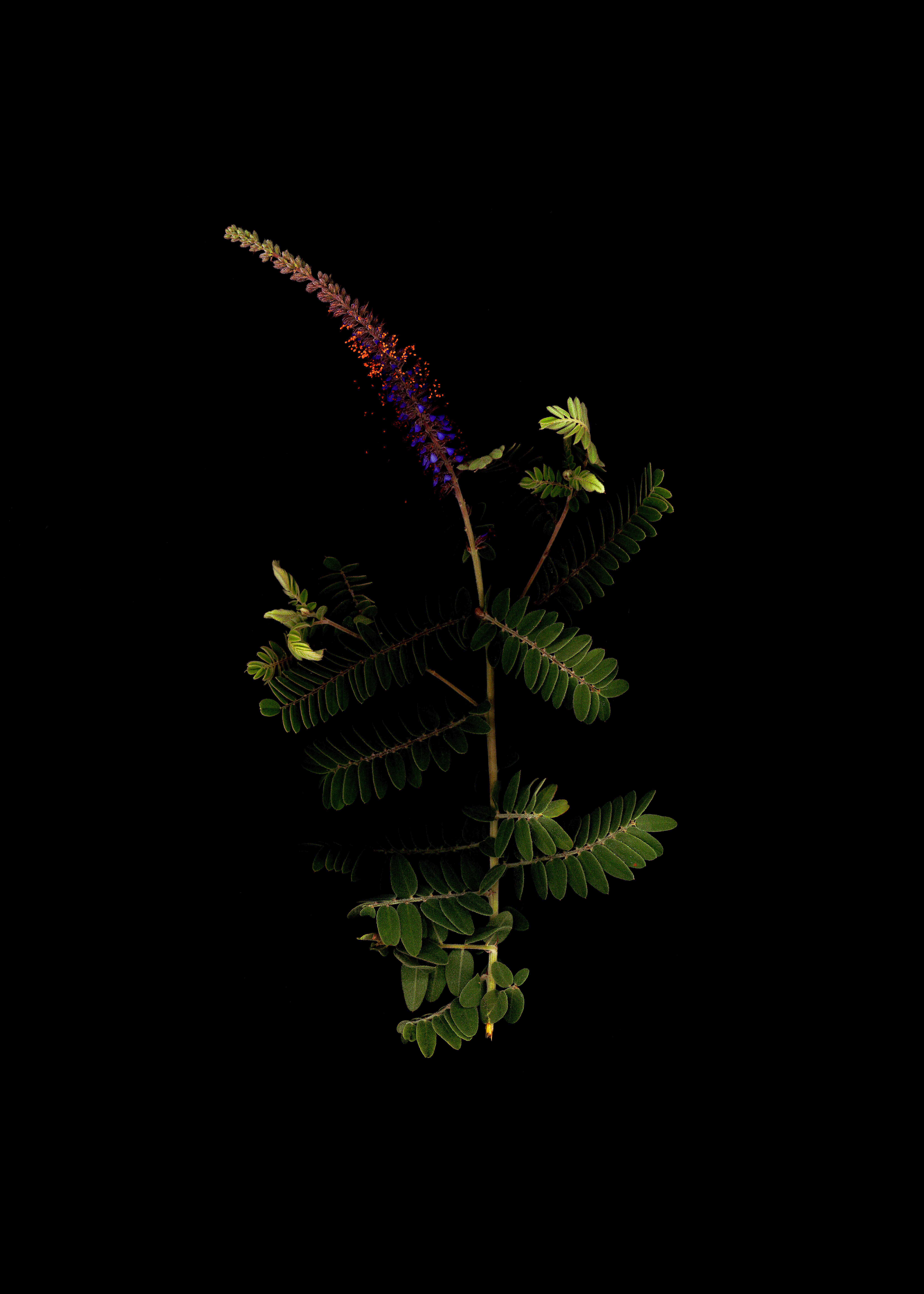
Leadplant (by Sara Suárez)
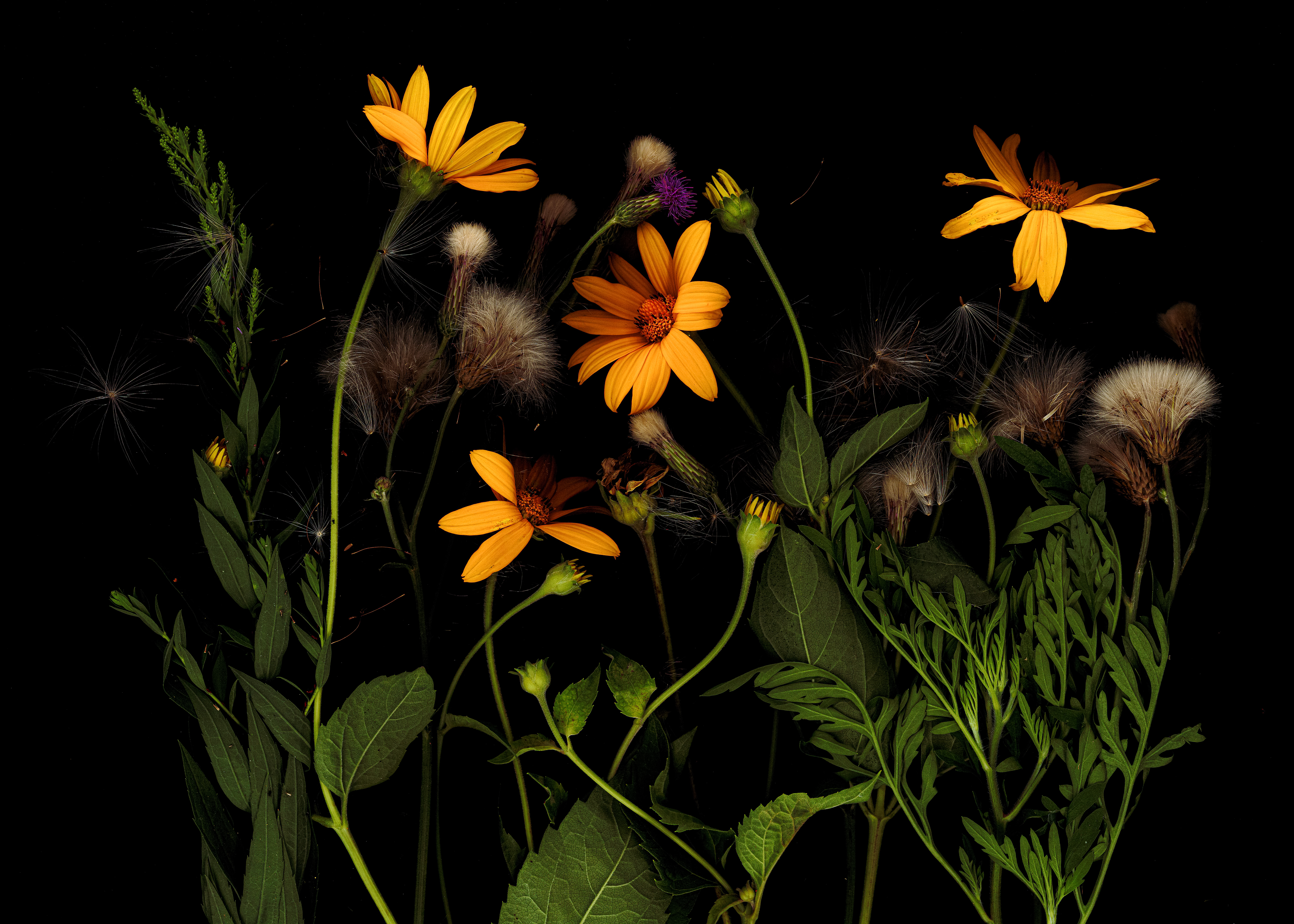
A botanical assemblage (by Sara Suárez)
In the field I found myself thinking about depth, which the prairie has in all directions: these long extents of time, the melting of wildflowers into plain green horizon, and the physical roots that I’m told can be as deep as fifteen feet. At a distance its tangled texture becomes a green expanse, enclosed by clean lines of corn and soy fields and their seemingly infinite grids. In contrast to that, I was interested in the visual textures of the prairie’s plant communities and how they appear interwoven almost like a fabric. At Lakeside Lab I started to develop a set of photos around this concept, and my continuing project is to develop a video work connected to these ideas.
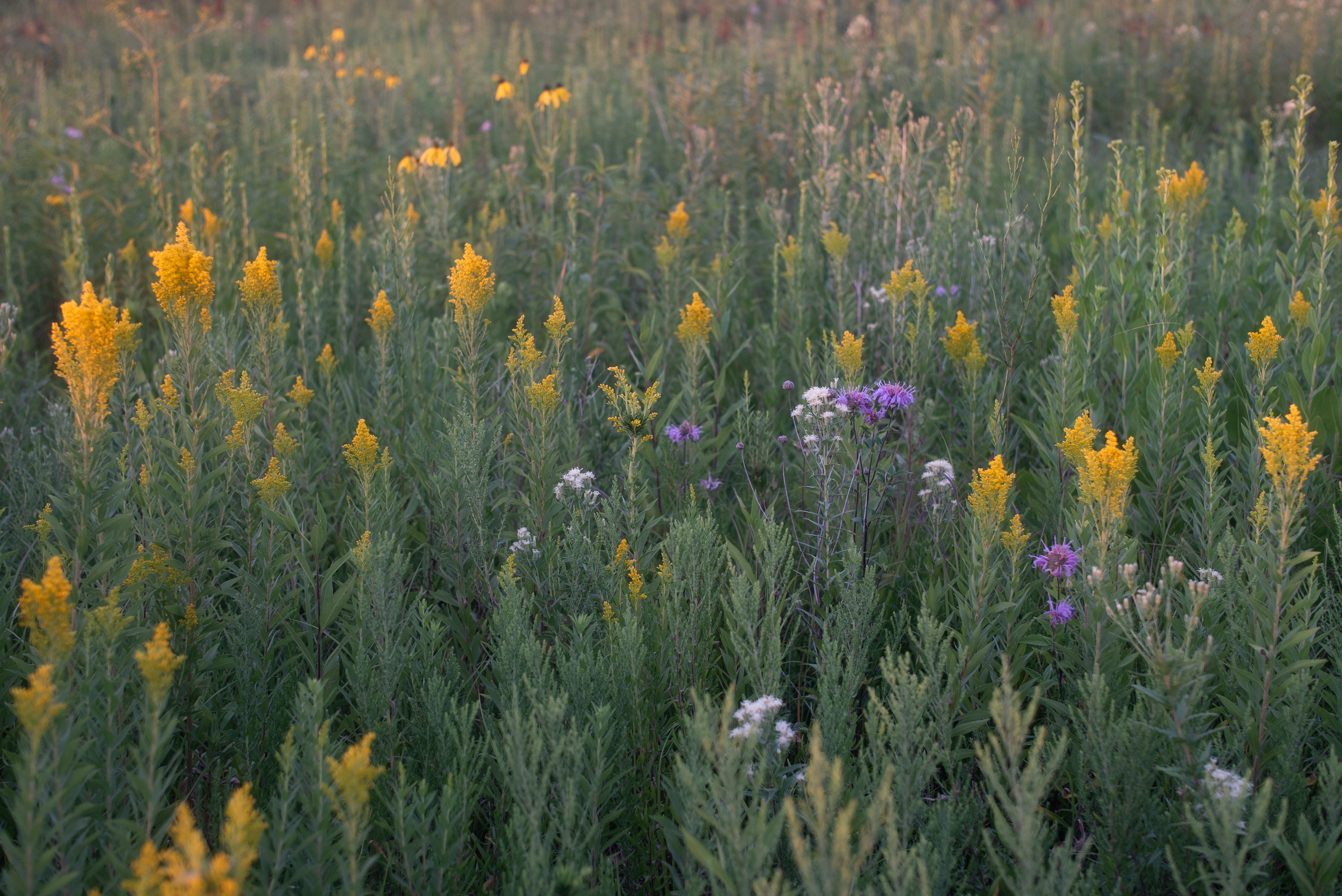
Prairie (photo by Sara Suárez)




